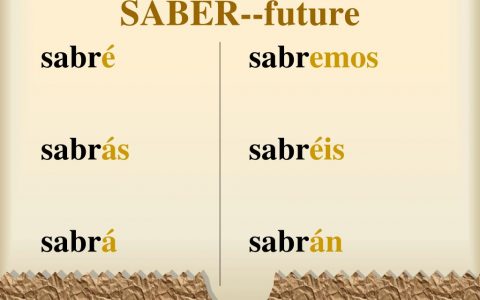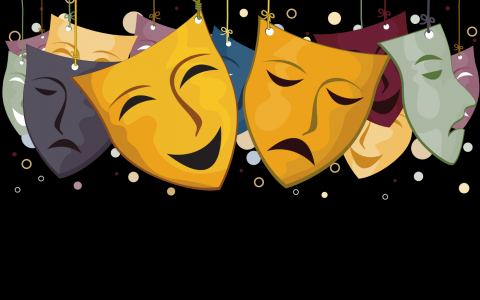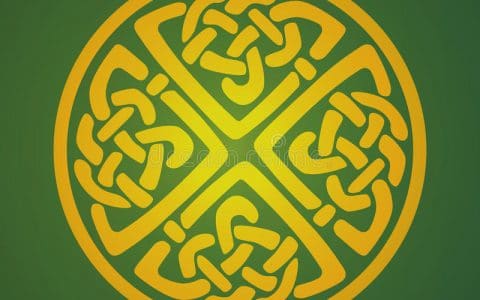Vikings have many symbols based on Norse mythology. Vikings’ symbol is a very important thing for their culture. These symbols represent their different types of gods. Viking’s symbols hold a lot of history and mystery. But there are many symbols, and their meanings are available. They believed that they could contact gods with these symbols. The Norse people use these symbols for many reasons. Norse mythology’s symbols dealt with otherworldly beings and the difficulties of ordinary life. However, the mystery of what awaited beyond death. Next, some of these symbols can be definitively dated to the Viking Age (about 790 – 1100 CE). Although they were undoubtedly in use much earlier. Next, other symbols appear to have emerged later (between c. 1100 and c. 1300) when Christianity had taken root in Scandinavia. In this article, we are discussing Viking symbols.

So, please keep reading to know about these mythical symbols.
Viking symbols and meanings
Valknut
Without question, the Valknut is one of the most well-known and well-liked Viking emblems. Moreover, the Valknut, also known as Odin’s knot, Hrungnir’s heart, the knot of the dead warrior, and the Heart of Vala, is Odin’s emblem. Next, the term ‘valknut’ came from two words: ‘valr’ and ‘knut.’ However, ‘valr’ means killed warrior and ‘knut’ means knot. According to Norse belief, Odin, the god of death and war in Norse mythology, would welcome soldiers slain/killed in combat to Valhalla (the Hall of the Slain). Furthermore, in several Vikings burials, some people discovered the Odin statues, figures and paintings of animals. These are the two primary reasons why the Valknut is regarded as Odin’s emblem.
Yggdrasil
Moreover, the Yggdrasil is a massive legendary tree in Norse mythology. Next it connects the Nine Worlds or realms of existence. An eagle dwelt at the very top of Yggdrasil, while a dragon named Nidhug lived at the very bottom. Next, they both despised one other and were terrible adversaries. Next, Jormungandr is the snake guard of the Nine Worlds. Yggdrasil is one of many variants of the Cosmic Axis or Universal World Tree. However, this is not unknown to all human civilizations and is home to many intriguing animals. Next, the picture of Yggdrasil may be seen on the renowned overhogdal Tapestry, which dates from 1066 and shows the events of Ragnarok, the fate of the Gods, and the apocalyptic record of the approaching comet.
The second reason is that it is thought that the fruits of Yggdrasil produce youth for the gods, ‘giving them life.’ According to Norse mythology, Ragnarok, a war between gods, will destroy the world, with only a man and a woman escaping by hiding within the hollow of a tree. The pair will abandon the tree to reintroduce life into the planet. Although the tree in issue is not expressly specified, and Yggdrasil is not directly related to the narrative, others think it is the tree that will safeguard life from Ragnarok.
Viking symbol of protection
However, Aegishjalmur is the next symbol in our long list of Viking symbols. Next, Aegishjalmr had another name. So, this name is Helm of Awe and Terror. However, this is a rune stave used as a Viking protective sign. Next, Aegishjalmur came from two Old Norse words: ‘aegis’ and ‘hjalmr.’ Next, aegis means “shield,” and Hjalmar means “helm.” Now, we should clarify something here: the ‘helm’ portion of Aegishjalmur is the basis of the term ‘helmet’ in English. Next, it does not relate to something tangible or signify a real helmet – as many people later think. So, it simply means ‘in the lead.’
In reality, Viking warriors used to draw Aegishjalmr on their foreheads. However, they drew this to defend themselves from their adversaries and frighten them. Then, in various sagas about the actions of the Viking heroes, we found the Aegishjalmur. Next, the Völsunga Saga is one of several Norse protective emblems. Today, the Aegishjalmur is drawn or tattooed as a protective or identity mark among Asatru followers.
The triple horn of Odin
Moreover, the Triple Horn of Odin is a Viking sign. Next, it consists of three overlapping horns that represent the three horns in the tale of Odin and his hunt for the magical mead. Next, Odhroerir/rerir has another name. Then, this name is the Mead of Poetry. According to legend, two dwarves named Fjalar and Galar murdered Kvasir. Next, this was a creature made from Vanir and sir/Aesir (the two sets of gods in Norse mythology). Aesir knew everything and could answer every question. Kvasir’s blood was mingled with honey and spilled into three horns dubbed rerir/Odhroerir, Bon, and Són by the dwarves.
According to legend, Odin used his cleverness to persuade the giantess Gunnlö and negotiated with her for a sip of mead every three days for three days. Next, Allowed only one taste per day, he utilized an entire horn for each sip, allowing him to consume all of the Mead of Poetry, which allowed him to escape by transforming into an eagle. Next, apart from identifying as Norse, the Triple Horn of Odin is now employed as a sign of knowledge and inspiration, particularly lyrical inspiration.
Mjolnir
However, Mjölnir, Thor’s Hammer, is undoubtedly one of the most important Viking emblems/Norse symbols due to its authenticity and significance in Norse mythology (if not the most important one). Next, there are various theories on the etymology of Mjllnir in Old Norse. Then, some believe Mjöllnir means ‘lightning,’ while others believe it means ‘white’ (as in the color of lightning) and/or ‘fresh snow’ (in the sense that it represents purity). Another interpretation of the term is that it means ‘crushing’ or ‘to crush.’
Mjölnir, according to Norse mythology, was a legendary weapon. However, Thor used this weapon for a variety of reasons. Next, Thor used his hammer to consecrate objects and people, bringing them from the domain of chaos into the sacred realm or universe. What also thought that he employed Mjölnir to bless weddings, during which he bestowed fertility on the pair. The Hammer of Thor is regarded as a Norse emblem of protection. Thor saved mankind from disorder by consecrating them with Mjölnir and defended the universe against giants by crushing them with it. In reality, Viking warriors used to wear Thor’s Hammer as an amulet to grant protection during combat.
This custom was kept on even after many Vikings converted to Christianity: Christian Vikings wore Mjölnir amulets together with crosses around their necks. Mjölnir used to symbolise the Germanic Neopaganism faith. Next, it has another name. So, this name is Heathenry/Heathenism. It is one of the most iconic Norse protection symbols.
The Swastika
The Swastika is the Viking emblem that has almost completely lost its genuine significance. Vikings employed this emblem for consecration and blessing. Indo-Europeans in a manner comparable to Mjölnir, was seized by Hitler and the Nazi party and has since been generally identified with that and only that. When a person or item is sanctified with the Swastika, that person or thing becomes holy and lucky. Some individuals considered the Swastika the most important good luck symbol/charm.
It was said to transform a person from a desperate, chaotic condition to one of strength, wealth, and order.
Viking symbols for strength
The Vegvisir is another Viking symbol. This weapon is made up of rune staves that are often connected with Aegishjalmur or even mistaken due to their similarities.
The Vegvisir had another name. This name is Viking compass/Nordic compass or the runic compass. It guides someone who has lost his way. What would also paint it on Viking ships before they set sail to assure their safe return home.
However, there is some uncertainty regarding the symbol’s origins and whether it is a true Viking-era mark because few materials describe it.
Viking symbols tattoos
According to legend, the Vikings had tattoos from the tips of their fingers to the backs of their necks. Viking tattoos typically included old Norse symbols, varied knot designs, or dark green tree emblems. No one can truly corroborate the symbols, patterns, or motifs that the Vikings employed for their tattoos. However, they would probably have utilized Norse mythology symbols and old designs seen in their artworks on jewelry, engravings on bones, boats, and other things.
Viking symbols raven
In Norse mythology, we can see the Ravens. However, Ravens appeared on the banners of several Viking earls and monarchs, notably Ragnar Lothbrok. Next, Vikings also utilised ravens to locate land when they set sail into uncharted waters. Next, Ravens were once kept in cages and released regularly to obtain food. Then, after releasing the ravens, they would survey the ship’s area and fly towards land if they discovered it. Then, if they didn’t, they’d fly directly back to the ship. According to the tale, one of the most renowned Vikings, Floki (Hrafna-Flóki Vilgerðarson), discovered Iceland. ‘Hrafna’ literally means ‘raven.’
Some frequently asked questions
What is the most powerful Viking symbol?
The Helm of Awe, Aegishjalmur, is one of the most powerful Norse emblems in Norse mythology. The Helm of Awe comprises eight spiky tridents that guard the focal point against the hostile forces surrounding it, symbolizing protection and victory over adversaries.
What are the Viking symbols?
There are many Viking symbols. These are:
- Runes
- Valknut
- Yggdrasil
- Aegishjalmur
- Vegvisir or the Viking Compass
- The Horn Triskelion
- Mjölnir
- The Swastika
- Svefnthorn
- Huginn and Muninn
- The Web of Wyrd
- Gungnir
- The Troll Cross
- Ægishjálmur
- Triskele (Horns of Odin)
- Triquetra (Celtic Knot)
- Viking Axe
- Longship
- Gungnir
- Ravens
- 8-Legged Horse
- Dragons
- Cats
- Bears
- Boars
- Wolves
What is the meaning of Viking symbols?
Vikings have many symbols based on Norse mythology. Vikings’ symbol is a very important thing for their culture. These symbols represent their different types of gods. Viking’s symbols hold a lot of history and mystery. But there are many symbols, and their meanings are available. They believed that they could contact gods with these symbols. The Norse people use these symbols for many reasons. Norse mythology’s symbols dealt with otherworldly beings and the difficulties of ordinary life. However, the mystery of what awaited beyond death. Next, some of these symbols can be definitively dated to the Viking Age (about 790 – 1100 CE). Although they were undoubtedly in use much earlier. Other symbols appear to have emerged later (between c. 1100 and c. 1300) when Christianity had taken root in Scandinavia. In this article, we are discussing Viking symbols.
What is a Viking compass?
The Vegvisir is the runic compass or the Viking compass/Nordic compass. It, constructed of eight Viking rune staves. However, it is a sign of protection and direction. According to Galdrabok, this emblem will aid its user in avoiding being lost and finding their way back.
What is the Viking Bible called?
The Vikings lacked a religious book. They were an oral religion, like other ethnic faiths. They possessed many legendary and epic poetry. Their all poetries are available in the “Eddi” book. Although this book, which some modern pagans regard as “holy text,” was only written down in Christian times.
What do dragons mean to Vikings?
The Vikings were well aware of the dragon’s strength and significance. There are representations on buildings, in runestones, and exquisite jewelry. The dragon or snake represents power and bravery. Wearing a dragon motif would represent these beliefs.
What is Odin’s god?
Odin has many names. However, these names are Wodan, Woden, or Wotan. Next, Odin is a major god in Norse mythology. Next, Odin was the best magician among the gods. Moreover, he was also the poet’s deity. He appeared to be a tall, elderly guy with a flowing beard and just one eye (the other he gave in exchange for wisdom).
What is the meaning of the Valknut symbol?
Without question, the Valknut is one of the most well-known and well-liked Viking emblems. However, The Valknut, also known as Odin’s knot, Hrungnir’s heart, the knot of the dead warrior, and the Heart of Vala, is Odin’s emblem. The term ‘valknut’ came from two words: ‘valr and ‘knut.’ However, ‘valr’ means killed warrior and ‘knut’ means knot. According to Norse belief, Odin, the god of death and war in Norse mythology, would welcome soldiers slain/killed in combat to Valhalla (the Hall of the Slain).



